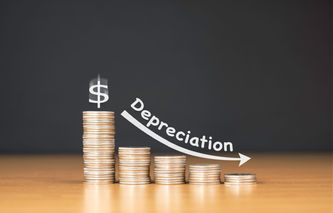Definition
The financial accounting term depreciable base is used to describe the value that is divided by the service life of the asset to determine the annual depreciation expense under the straight line method. The depreciable base is the value of the asset to be written off over time.
Calculation
Depreciable Base = Original Cost of Asset - Salvage Value of Asset
Explanation
There are two factors that influence the calculation of an asset's base for depreciation: the historical (original) cost of the asset as well as its salvage value. There can also be costs subsequent to acquisition that add to the value of an asset. In the same way the salvage value of the asset, which is defined as the amount the company expects to receive when it is removed from service or sold, can affect the asset's depreciable base.
In practice, the salvage value of many assets is very small, and companies assign a price of zero. The value of assets found on the company's balance sheet is stated in terms of original cost, not depreciable base, which is only used in the calculation of depreciation expense.
Example
Company A purchased a widget maker for $380,000, with a serviceable life of seven years and a salvage value of $30,000. In order to calculate straight line depreciation on this asset, the depreciable base is determined as:
= $380,000 - $30,000, or $350,000
The annual depreciation on the asset was then calculated to be:
= $350,000 / 7, or $50,000 per year
.png)



